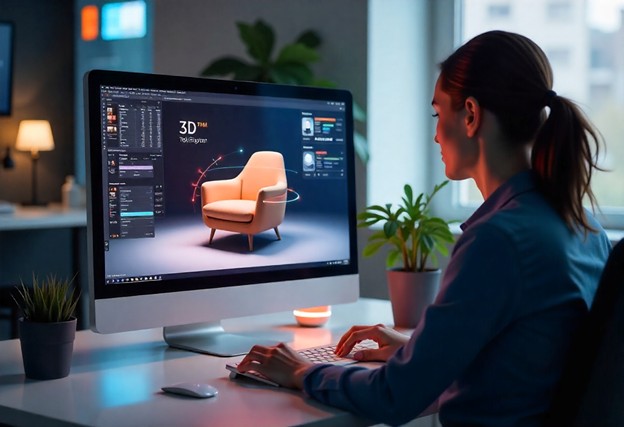The New Face of E-Commerce: How 3D Product Visualization Platforms Are Transforming Online Shopping

A decade ago, online shopping was a leap of faith. Customers clicked “Add to Cart” hoping that the color on their screen matched reality and that the product dimensions weren’t lost in translation. Fast forward to today, and the landscape has been revolutionized by 3D product visualization platforms—interactive tools that allow shoppers to see, rotate, customize, and even place virtual products in their own environments before buying.
Platforms like Zakeke and Zolak are leading this transformation, helping businesses increase engagement, reduce returns, and dramatically boost conversion rates. And the most exciting part? The technology is no longer out of reach — zakeke pricing makes enterprise-level visualization affordable even for small and mid-sized e-commerce brands, delivering measurable profit from day one.
Why 3D Visualization Matters
E-commerce has always battled one major obstacle: the gap between expectation and reality. Shoppers can’t touch, feel, or try products online. Traditional photos and descriptions, no matter how detailed, simply can’t replicate the in-store experience. This is where 3D product visualization comes in.
A 3D configurator lets customers view products from every angle, zoom in on textures, and personalize elements like color, material, engraving, or size—all in real time. The result is not just an immersive experience but also a powerful decision-making tool. According to recent industry data, online stores using 3D visualization report up to a 40% increase in conversion rates and a 35% drop in return rates.
These aren’t vanity metrics—they directly translate to higher revenue and customer satisfaction. When buyers know exactly what they’re getting, they buy faster and return less.
Zakeke: Customization Meets Accessibility
Among the most accessible and flexible visualization platforms, Zakeke has carved a reputation for blending technical power with ease of use. It integrates seamlessly with popular e-commerce ecosystems like Shopify, WooCommerce, Magento, BigCommerce, and Wix. Once connected, Zakeke transforms static product listings into dynamic experiences where customers can design their own versions of items—from sneakers and mugs to furniture and electronics.
What truly differentiates Zakeke is its multi-layered customization engine. It supports both 2D and 3D configurations, enabling users to upload artwork, preview materials, and explore products in augmented reality (AR). This dual capability bridges the gap between personalized design and physical visualization.
For businesses, Zakeke isn’t just about aesthetics—it’s a profit amplifier. Dynamic pricing tools automatically adjust costs based on customization options (such as material upgrades or engraving complexity), ensuring transparent, profitable transactions. And thanks to Zakeke’s tiered plans, small businesses can start affordably while enterprise clients can unlock advanced features without breaking the bank. This is where Zakeke pricing becomes a strategic advantage: it lowers the barrier to entry while offering ROI through better engagement and fewer returns.
Zolak: Immersive Visualization for the Furniture and Interior World
If Zakeke represents the democratization of 3D customization, Zolak embodies the future of spatial commerce. Tailored primarily for furniture, décor, and interior design, Zolak goes beyond simple product customization. It enables users to visualize entire environments—rooms, offices, or showrooms—and see how products fit together in real-world context.
Imagine furnishing a living room online. With Zolak, customers can drop a sofa into a virtual room, change upholstery fabrics, experiment with wall colors, and even upload a photo of their own space to see the piece in situ. The platform combines 3D configurators, AR placement, and AI-powered visualization, delivering a shopping experience that feels more like a design consultation than a transaction.
For brands, this contextual visualization is pure gold. When customers can visualize how a product fits into their lifestyle, they’re significantly more likely to buy—and far less likely to return the item. Moreover, Zolak offers professional-grade rendering tools, turning 3D models into high-quality marketing visuals for catalogs and campaigns. It’s both a sales tool and a creative production engine.
The Business Case for 3D Visualization
Adopting 3D product visualization isn’t just about keeping up with trends—it’s about survival in a market where customers expect interactivity and personalization. Today’s consumers are visual learners who trust their eyes more than descriptions. A 3D experience triggers emotional engagement and reduces uncertainty, leading to stronger brand loyalty.
On the operational side, these platforms streamline production workflows. The digital assets created for visualization double as manufacturing references, eliminating costly design errors. And because configuration happens in the browser, there’s no need for brands to develop custom visualization software from scratch—a massive time and cost saver.
Zakeke and Zolak, though different in focus, share one philosophy: turn visualization into value. Whether it’s a customizable T-shirt or a modular sofa, both platforms make online shopping tactile, personal, and emotionally resonant.
Looking Ahead: The Future Is Interactive
As augmented reality, generative AI, and WebGL continue to evolve, 3D visualization will only get richer. Soon, customers will walk through virtual showrooms using AR glasses, adjust lighting conditions, or see real-time renderings of materials that respond to touch and motion. For businesses, the frontier is limitless—but success will depend on choosing the right platform for their niche.
If your products thrive on personalization, Zakeke delivers unmatched flexibility and scalability. If your brand lives in the world of interiors, Zolak’s immersive environments redefine how customers connect with your catalog. Either way, the message is clear: static product pages are obsolete. The future of e-commerce is three-dimensional—and it’s already here.



